
In this post, I’ll show you how to do content marketing in 9 simple steps — and in a jargon free, friendly way.
Let’s start with a quick definition of what content marketing actually is.
What is content marketing?
Simply put, content marketing is the process of creating and distributing content with the aim of attracting customers.
Now that might sound nice, but perhaps also a bit abstract or technical. So let’s explore an example of how a content marketing campaign works in real life.
Let’s say I’m interested in getting into podcasting. But I don’t really know how to do it, and I don’t have much in the way of equipment. So I go onto Google and type in a query like ‘How to record a podcast with an iPhone.’
The first organic result I find is a blog post from a website called Riverside FM (see my screenshot below). It gives me a list of the hardware and software I’m going to need to create my podcast on my phone, along with relevant recording instructions.
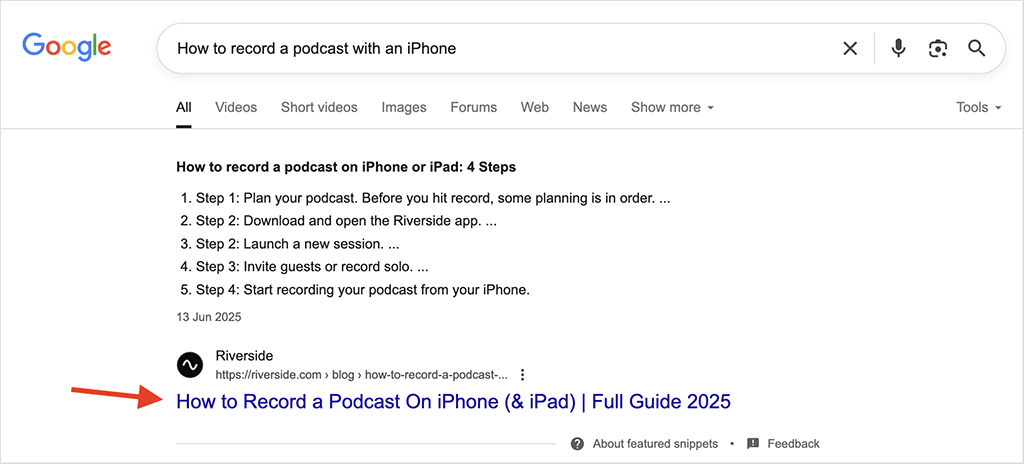
But then there’s a knock on the door, I get distracted by dealing with an Amazon delivery for my neighbour and I don’t finish reading the article.
The next day I get back to researching my podcast project. This time I go onto YouTube and type in the same query — ‘how to record a podcast on an iPhone.’
And this time I see a helpful video which answers my query comprehensively — and I notice that it’s from the same company that wrote the blog post I started reading, Riverside FM.
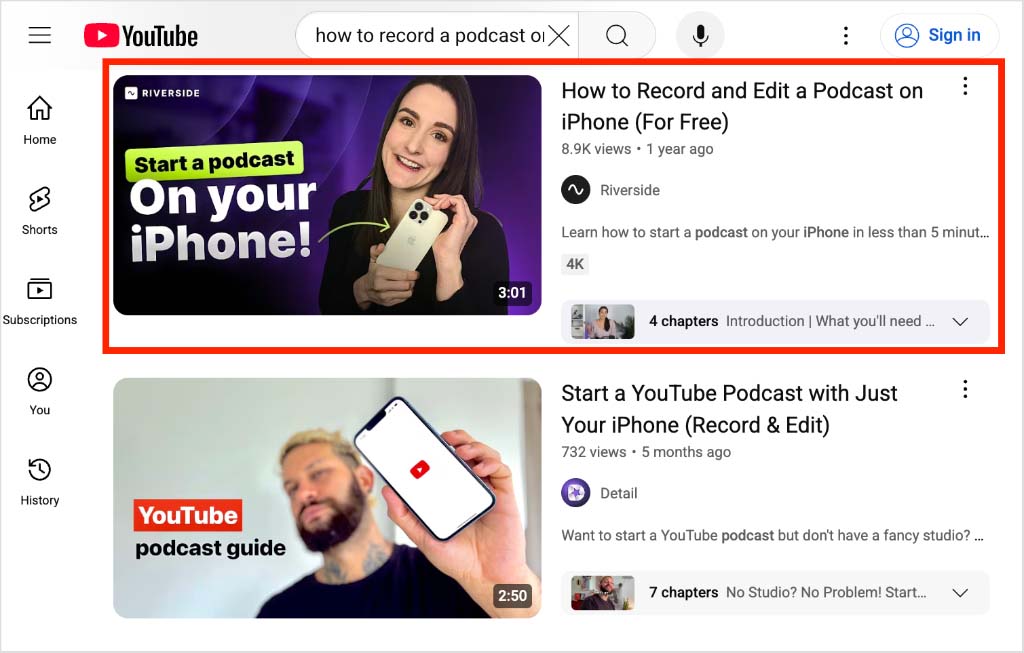
I Google this company’s name and find out that they make podcast software. I then check out some product reviews and customer testimonials for their app and see that the general consensus is that it’s pretty good. I go back to the Riverside FM website and buy it.
What’s happened here is that Riverside’s content has very efficiently generated a sale. I had a problem, and content — in the form of a blog post, a YouTube video and reviews — took me quickly to the solution.
And if you think about why or how you made your last online purchase, you’ll probably find that content was involved somewhere along the way too.
Ultimately, content can be an incredibly powerful driver of sales, and in the rest of the post I’m going to show you how to make a content marketing strategy work for your business.
A quick note before I continue, though.
The tool I’m going to use to show you how to do content marketing is Semrush. If you’d like to follow along with what I’m doing, you can access an extended trial of the platform by using the link below.
If you’re not using Semrush, don’t worry — the same principles I’m going to discuss throughout this article broadly apply.
OK, let’s dive in.
Step 1 — create a buyer persona
Before you start creating a bunch of blog posts and videos, it’s important to be aware exactly who you’re creating them for.
This is where creating a buyer persona comes in.
A buyer persona is a semi-fictional profile of your ideal customer, based on research and data about your existing or target audience.
You can use Semrush’s free persona builder tool to build one — this lets you create multiple personas and append demographic information, interests, motivations and more to them (see my screenshot below for an example of one).
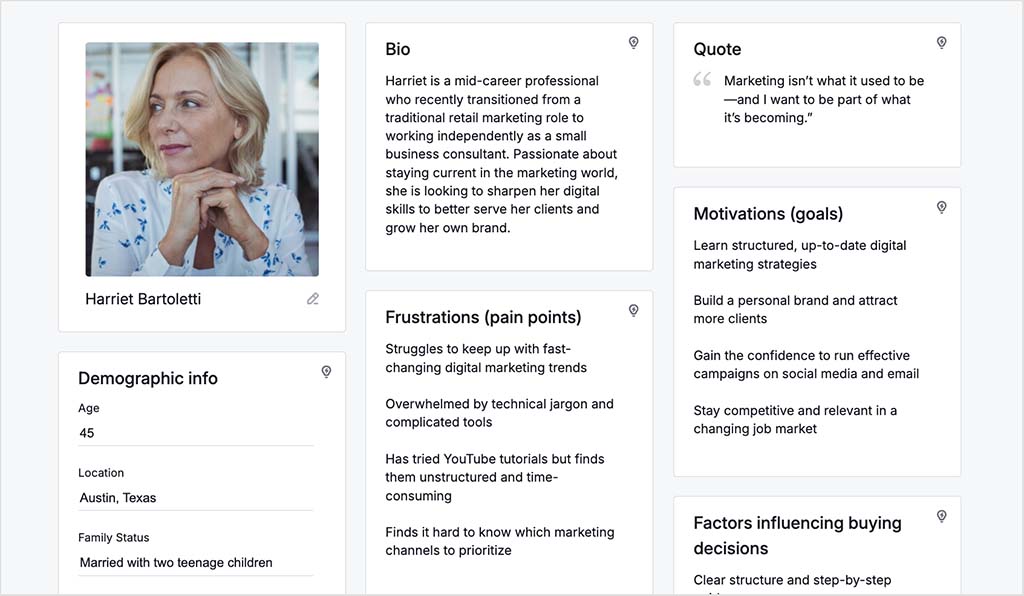
When you’ve created your buyer persona, you’ll have a much clearer idea of the sort of topics that you’ll need to cover for your audience.
Step 2 — conduct keyword research
Now that you’ve got your buyer persona, and an idea of the kind of content that you’re going to need to create for them, it’s time to find out what keywords to build your articles or video content around.
This means doing some keyword research, a process that generally involves three key steps:
- Finding out how many people are searching for a particular phrase.
- Establishing how difficult it is going to be to rank highly in search results for it.
- Getting suggestions for other phrases that it might be easier to rank for, or that you hadn’t previously considered.
To do this in Semrush, you need to go to its ‘Keyword Overview’ tool and enter a keyword related to the topic you want to write about.
Let’s imagine that I run a website that sells guitars, and I want to find a keyword about buying guitars that I have a reasonable chance of ranking highly for.
I’m going to start off with something really obvious: “guitars.’’
When I enter this into Semrush, I get some good news and some bad news.
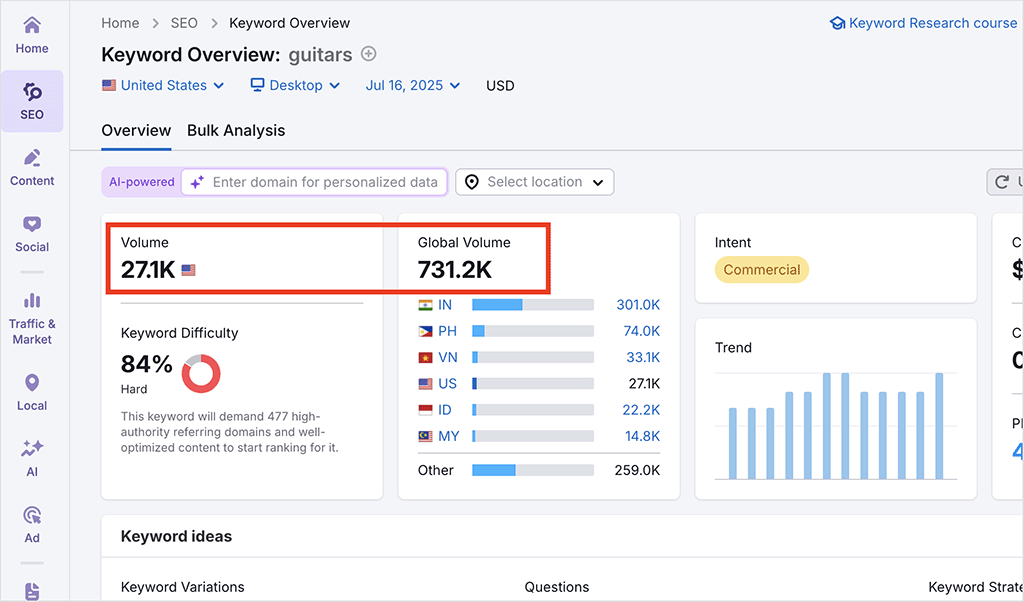
The good news is that lots of people are searching for this term every month — around 27,000 in the US, and 731,000 globally.
The bad news is that this term is going to be very hard to rank for. Semrush estimates that in order to rank highly in search for it, I’m going to need to build links from 477 high-quality websites to my content about guitars, something that is pretty tricky to do.
So realistically, I’m going to need to find some alternative keywords to build my content around.
To do this, I need to use Semrush’s ‘Keyword Magic’ tool. As you can see from my screenshot below, clicking on this immediately gives me quite a lot of suggestions related to guitars, along with data to help me make sense of them.
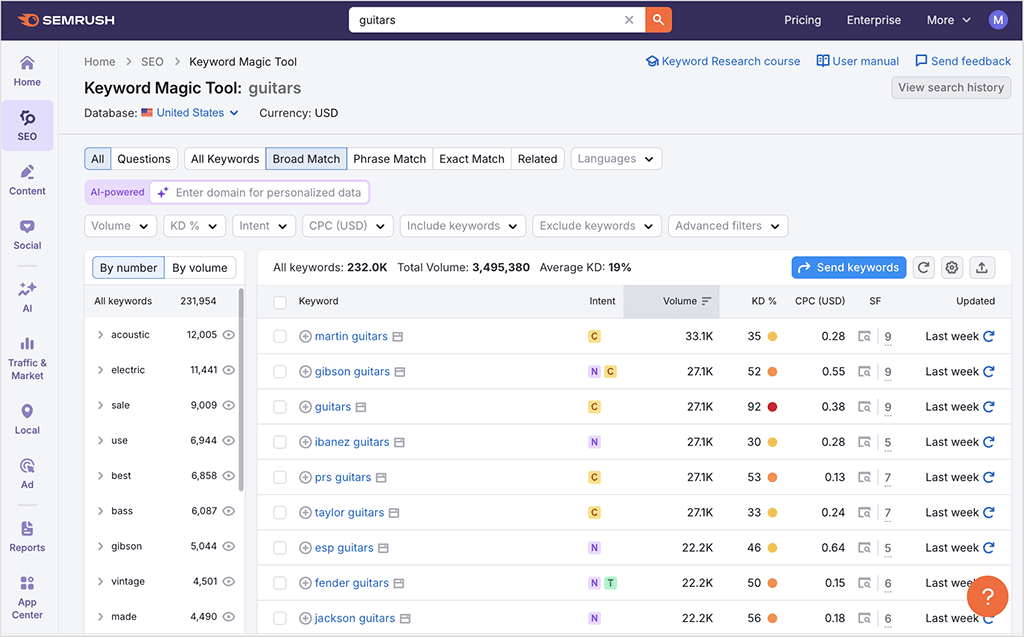
The KD percentage — with KD standing for ‘keyword difficulty’ — lets me know how hard it will be to rank for each suggestion, and the ‘volume’ ‘figures let me know how many monthly searches there are for each keyword in my list.
To see a list of phrases that I have a good chance of ranking for, I can just go to the Keyword Difficulty filter, and ask Semrush to show me ‘easy’ keywords.
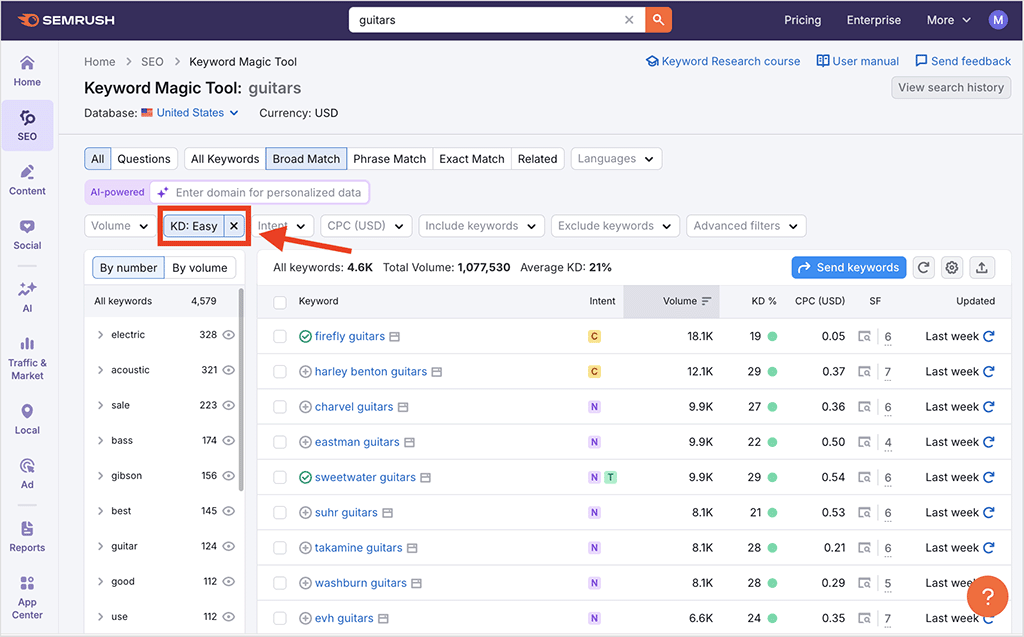
Looking down the list, I can immediately see some interesting options — for example, 18,000 people search for ‘Firefly guitars’ every month in the US alone, and this phrase is fairly easy to rank for. This might encourage me to write an article like ‘Are Firefly guitars any good?’ or ‘Should I buy a Firefly guitar?’
You can also use some of the filters provided by Semrush to get more specific article title ideas. On the left hand side of the keyword suggestion list, Semrush surfaces words that typically accompany the phrase you originally entered. So, for example, with my ‘guitars’ query, the word ‘best’ regularly crops up.
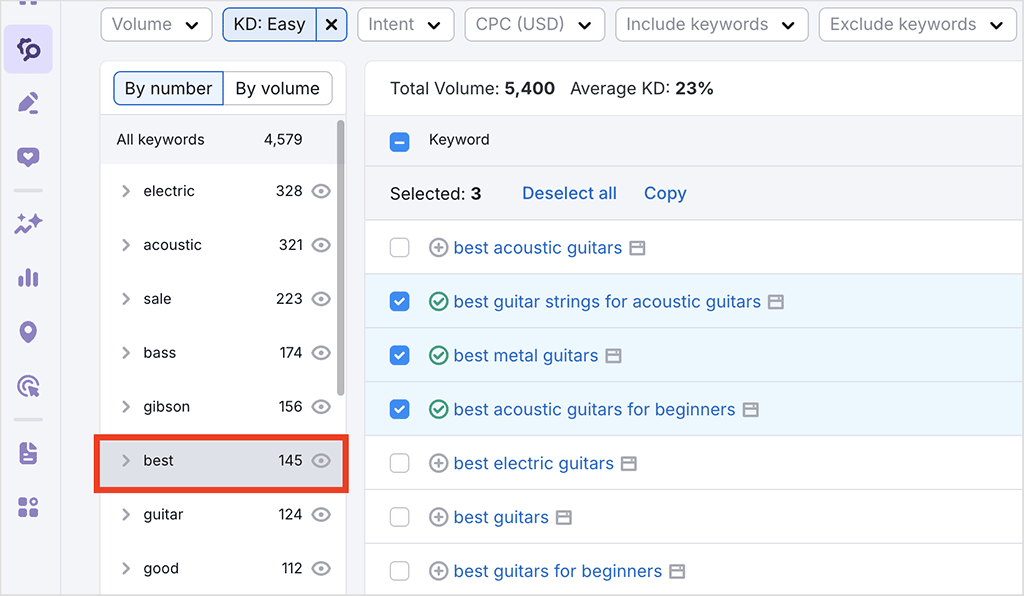
Clicking on the ‘best’ phrase gives me very clear ideas on topics to create content about. For example, I can see that articles or videos about the ‘best guitar strings for acoustic guitars’, the ‘best metal guitars’ or the ‘best acoustic guitars for beginners’ have decent search volumes, while being easy to rank for too. These would be great topics for articles or videos.
The trick is always to try to find phrases that combine a good monthly search volume with a low keyword difficulty score.
Now, this is just a quick overview of the process involved in keyword research — if you’d like a deeper dive, you can check out our video on the topic below or read our detailed guide on how to do it here.
Once you’ve got a shortlist of keywords that you’d like to use for your content creation, it’s time to decide upon a format for it.
Let’s take a look at that next.
Don’t miss out on our free SEO toolkit
For a limited time only we’re offering our readers some excellent free SEO tools and resources. Sign up now to immediately receive:
- our downloadable cheatsheet containing the 20 key steps to ranking highly in search results
- extended free trials and discounts for leading SEO tools
- our downloadable cheatsheet on how to grow organic traffic to a blog
- 2 in-depth guides to SEO
- ongoing free tips and advice on SEO and growing your business
Step 3 — choose content formats and channels
Once you know your audience and the kind of content it likes, the next step is to decide on the format this content should take — and the channels you’ll publish it on.
And this really matters — not every format works for every business, or every audience, or even every topic. A long-form blog post might work brilliantly for Google SEO, but it won’t help much if your audience prefers to learn by watching videos on YouTube or TikTok.
Likewise, if you’re targeting busy B2B professionals, they’re probably not looking for your content on Instagram — but they might be delighted to find it on LinkedIn.
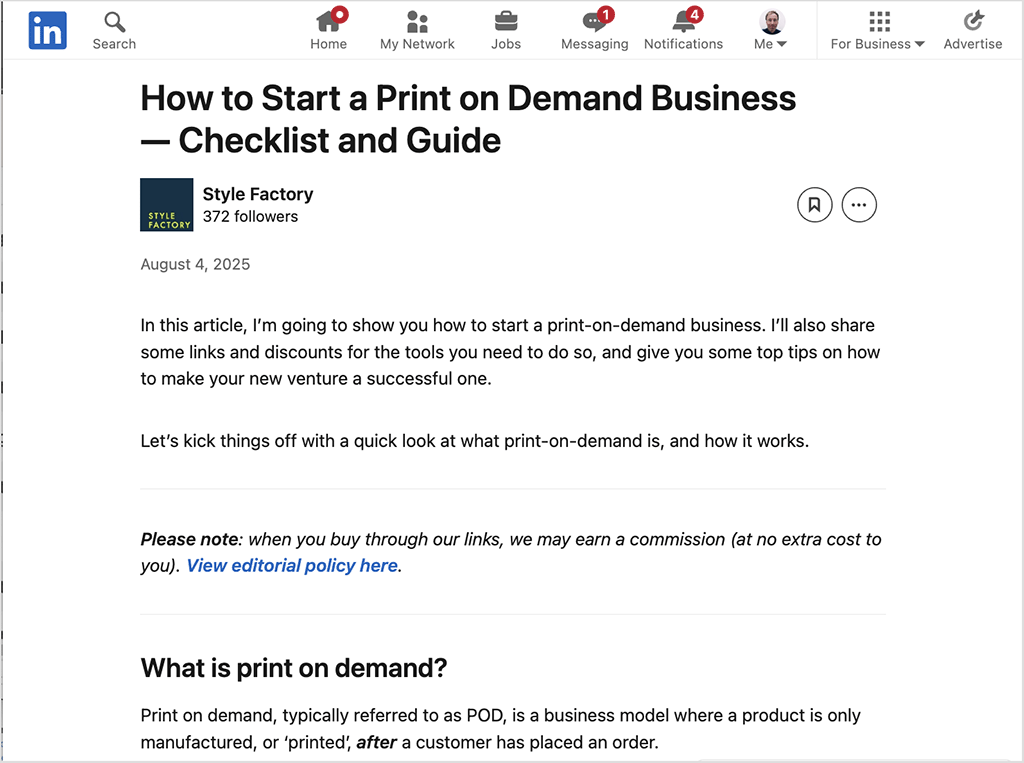
The key is to match your format and channel to the habits of your audience and the nature of your topic.
For example, if you were trying to establish yourself as a thought leader or trusted voice in your space, you might focus on creating content like opinion pieces and industry research reports, and publishing them on your own website.
If your focus is on lead generation, you might focus on creating download magnets like ebooks, free tools or webinars, and using social media posts to promote them.
And if you wanted to generate sales, you might consider publishing videos on YouTube containing product comparisons, case studies or feature explanations.
As a rule of thumb, start with just one or two channels, and focus on doing these well. You don’t need to be on every platform — in fact, spreading yourself too thin often leads to burnout and inconsistent results.
Step 4 — create content that solves real problems
Once you’ve chosen your formats and channels, it’s time to actually produce your content. And this is where a lot of content marketing strategies fall apart — because it’s easy to focus on producing a huge volume of content, while forgetting about value.
Your number one priority here is to solve real problems for your audience.
Every piece of content you produce should:
- answer a specific question
- remove pain points
- help the user achieve something.
If your content doesn’t offer value — and it’s just fluff or filler — people will click away quickly, and the various algorithms behind the platforms you’re publishing on will punish you for that.
Ultimately, the more actionable your content is, the more useful it becomes — and the more likely your audience is to enjoy and share it.
Now there are various tools that you can use to speed up this content creation process.
One of those is Semrush’s AI Article writer, which uses a combination of generative AI and its own keyword database to help you produce high quality content that is more likely to rank higher in search results.
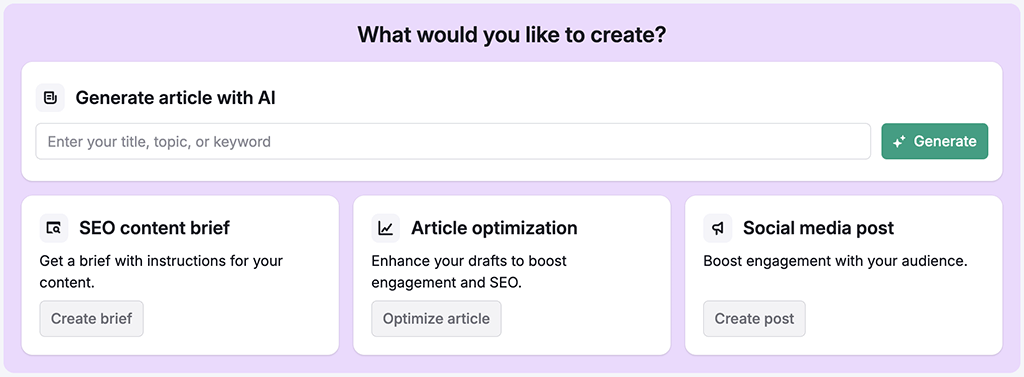
This is a very useful tool, but always factcheck its output carefully and get a human editor to review it. This helps ensure that the quality of any work produced with the feature meets both your expectations and those of your users.
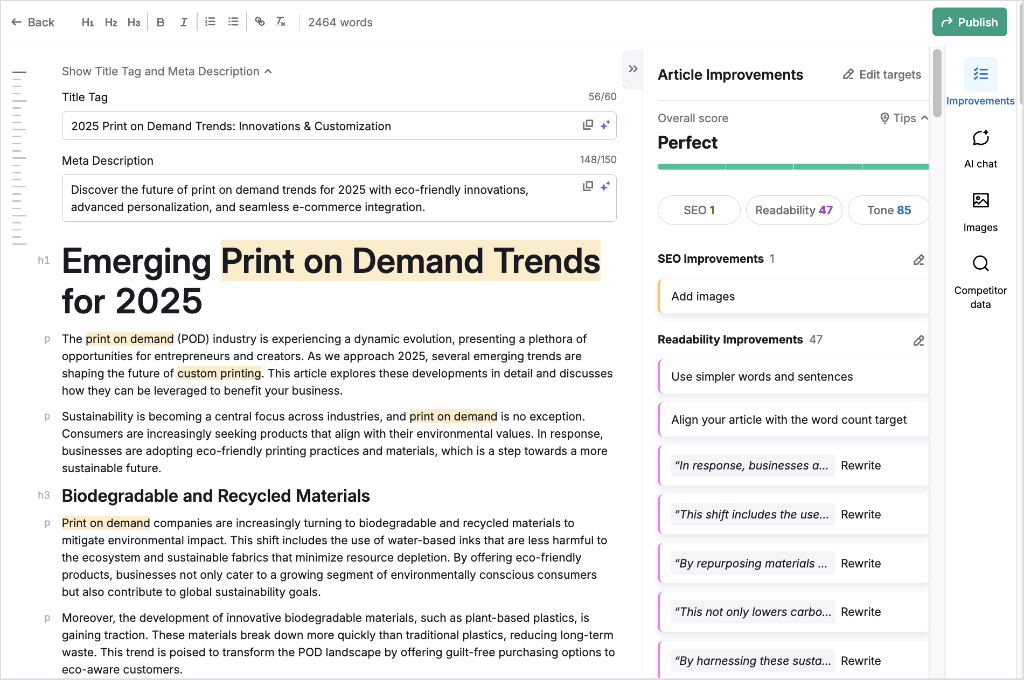
Step 5 — optimize your content
When you’ve got content that’s ready to publish, there are various ways that you can optimize it to ensure that it has the best chance of appearing on key platforms and search engines.
For blog posts and articles, you can use Semrush’s SEO writing assistant to get a list of tweaks that will help it perform better in Google.
For videos, you can use tools like TubeBuddy to help you optimize video thumbnails, titles and tags.
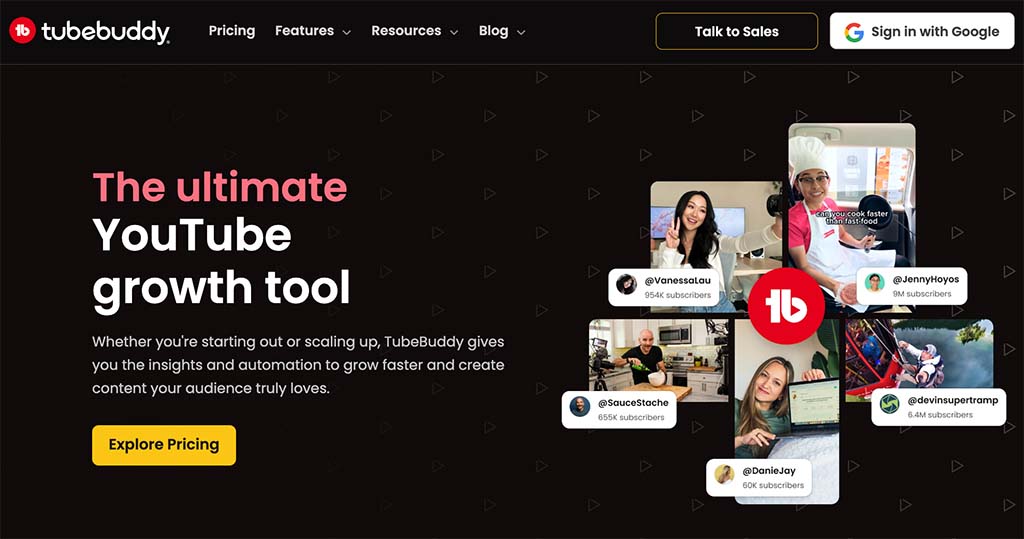
You’ll find plenty more advice on doing SEO right here on the Style Factory site — including lots of practical tips for optimizing your content so it performs well in search results.
And if you’re completely new to SEO, our ‘How to do SEO’ guide is a great place to start.
Step 6 — build backlinks
Backlinks are links from other sites to yours, and they are a really important part of SEO.
This is because search engines view backlinks as ‘votes’ for the quality of a piece of content. Generally speaking, the more backlinks to your content, the better it will rank in search results.
To get backlinks, you usually have to ‘reach out’ to other site owners in your niche and persuade them to link to your content. This can be hard — but it’s easier to do if the content you’ve created on your site is really good.
In Semrush, you can get suggestions for which site owners to contact using its link building tool (pictured below).

Add your site as a project, and then navigate to its Link Building Tool to surface websites that might be worth approaching, along with relevant contact details.
In fact, you can actually connect your email account to Semrush and use its CRM-style tool to manage the whole outreach process within the platform.
Here’s a bonus tip for building backlinks: certain types of content attract them in a more ‘natural’ way than others. If, for example, you have a highly useful tool on your website, you’ll probably find the page you’re hosting it on attracts more links than a regular blog post.
Statistics roundups can also attract backlinks organically — journalists often need to to include stats in their work to back up their arguments, and if you’ve got a post containing the figures they need, they’ll often cite them in their article and link back to your website when doing so.

Step 7 — repurpose your content
One of the most efficient ways to get more mileage from your content is by repurposing it. This means taking one piece of content and adapting it for use in other formats or on other platforms.
For example, a long-form blog post can be turned into a YouTube video, a series of LinkedIn carousels, a podcast episode, a downloadable checklist, or even a Twitter thread.
The benefits of repurposing are huge.
First, it can save you a lot of time — especially if you’re working with a small team or limited resources.
Second, it reinforces your message and grows brand visibility by showcasing both in multiple places.
And third, it improves reach: while some people love to read blog posts, others prefer watching videos or browsing visual content on social media channels.
Step 8 — ensure you’re capturing email addresses
One of the most valuable outcomes from content marketing you can aim for is capturing email addresses — this lets you turn casual readers or viewers into long-term subscribers and potential customers.
Once someone’s on your list, you can send them follow-up content, product offers, event invites, or apply automatic email sequences that gently guide them toward a purchase. Email is one of the highest-converting channels in digital marketing — and it works especially well in tandem with valuable content.
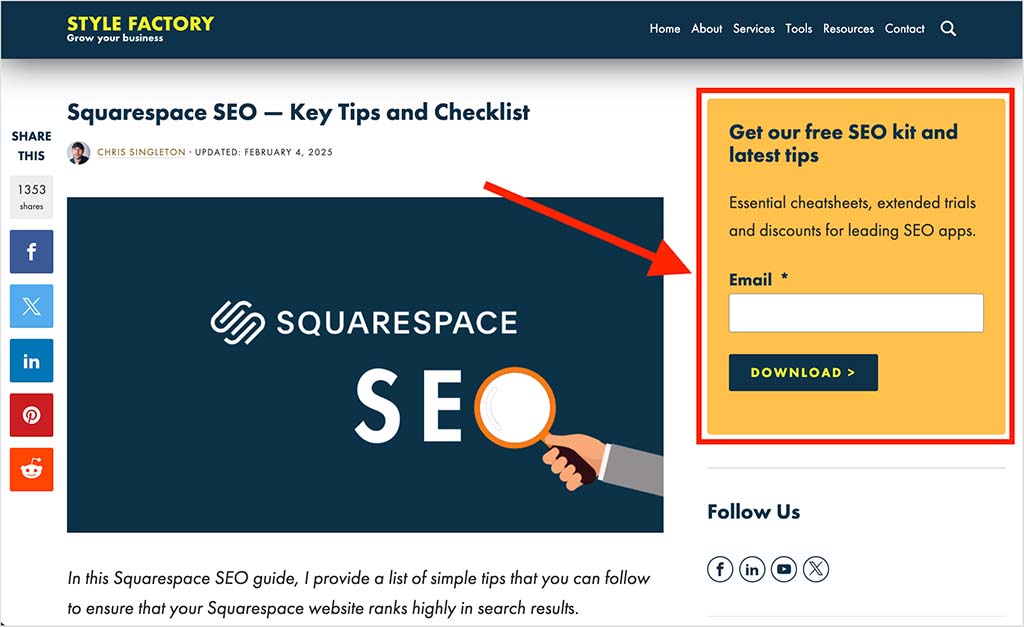
Done well, email capture lets you turn your content into a lead-generation machine, and gives you direct access to the people most likely to buy from you.
Additionally, many SEO professionals believe that Google’s search algorithm rewards sites that get lots of return visitors with better rankings — and enewsletters give you a fantastic way to drive those repeat visits.
So always include a sign up box or link in your content that encourages people to join your mailing list.
If you’d like more information about how to perform email marketing effectively, you can watch the video below, or read our in-depth guide to growing an email list here.
Step 9 — measure success
To improve your content marketing strategy over time, you need to measure what’s working and what’s not.
Tools like Google Analytics, YouTube Analytics and Google Search Console can show you which pieces of content are bringing in visitors, how long they’re staying, and what they’re doing next.
If you’re publishing blog content, you can use Semrush’s position tracking features to monitor any improvements or setbacks in search rankings — add your site as a project, then go to its position tracking section to add and monitor any keywords you’re interested in ranking for.

You’ll then get regular reports on how your content is faring for those phrases.
The trick really is to understand what’s working, double down on it, and refresh, update or repurpose underperforming content.
Wrapping up
I hope you’ve found this guide to content marketing useful!
It’s important to remember that the most successful content marketing strategies are built on consistency — so keep creating, refining, and promoting content as a regular part of your marketing workflow.
Before you go, if you’d like to explore how Semrush can help with your content strategy, don’t forget that you can access an extended free trial of the platform by visiting this page.
And if you have any questions about content marketing, feel free to drop them in the comments below — we read them all and will do our best to help.
Finally, for ongoing tips on content marketing, search engine optimization and digital strategy, I’d like to invite you to sign up to our mailing list below — doing so will give you access to our free SEO toolkit.
Don’t miss out on our free SEO toolkit
For a limited time only we’re offering our readers some excellent free SEO tools and resources. Sign up now to immediately receive:
- our downloadable cheatsheet containing the 20 key steps to ranking highly in search results
- extended free trials and discounts for leading SEO tools
- our downloadable cheatsheet on how to grow organic traffic to a blog
- 2 in-depth guides to SEO
- ongoing free tips and advice on SEO and growing your business
Good luck with your content marketing efforts!
No comments